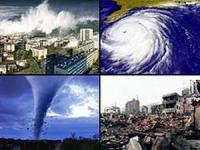-
MSU urged to pull the plug on an “eco-terrorism” video game
Michigan State University’s award-winning computer game development lab has developed a new computer game called “Thunderbird Strike.” Dr. Elizabeth LaPensee, the game’s designer, says that, among other things, the game is designed to “bring awareness to pipeline issues and contribute to the discontinuation of [Enbridge’s] Line 5.” Enbridge’s Line 5 is a 645-mile, 30-inch-diameter pipeline that travels through Michigan’s Upper and Lower Peninsulas. In the game, players get to blow up pipelines. Oil industry officials argue that the game, in effect, encourages players to engage in acts of domestic terrorism.
-
-
Fire-resistant coating to prevent failure in steel building fires
A few extra coats of “paint” could be all that the steel in a building needs to prevent itself from buckling and failing in a fire. Scientists came up with this idea when they were figuring out a commercially viable solution to protect reinforced concrete against underground fires. After two years of intensive research and development by the interdisciplinary team, an affordable 3-in-1 coating that offers enhanced fire and corrosion protection was invented.
-
-
Israel demolishes Gaza tunnel, killing 9 Palestinian militants
The Israel military (IDF) on Monday morning destroyed a tunnel Hamas fighters were building under the Israel-Gaza Strip. The Hamas Health Ministry in Gaza said that nine Palestinians were killed and eight others were wounded when the IDF blew up the tunnel. Israel this summer began work on an underground barrier meant to counter attack tunnels.
-
-
Greenhouse gas concentrations in the atmosphere surge to new record
Concentrations of carbon dioxide in the atmosphere surged at a record-breaking speed in 2016 to the highest level in 800,000 years, according to the World Meteorological Organization’s Greenhouse Gas Bulletin. The abrupt changes in the atmosphere witnessed in the past seventy years are without precedent. Globally averaged concentrations of CO2 reached 403.3 parts per million in 2016, up from 400.00 ppm in 2015 because of a combination of human activities and a strong El Niño event. Concentrations of CO2 are now 145 percent of pre-industrial (before 1750) levels.
-
-
Battelle completes 15-year CO2 storage project at Mountaineer Power Plant
One of the first tests for geologic storage of carbon dioxide at a commercial, coal-fired power plant has concluded, more than fifteen years after it began, completing a journey from an initial exploratory well to successful operations and site closure. The Mountaineer project helped establish the technical viability of carbon capture and storage (CCS) to reduce greenhouse gas emissions from coal-fired power plants, and to store carbon dioxide in geologic layers with limited prior data.
-
-
With more superstorms predicted, there’s a dream project to keep New York above water
Five years ago, on 29 October 2012, the coasts of New York and New Jersey were devastated by a rare late-October superstorm. Superstorm Sandy killed seventy-two people in the United States and caused more than $70 billion in damage. Over the next thirty years, floods of 7.4 feet or more, which used to occur in the New York area once every 500 years and are now happening every 25, could strike as frequently as every five years. Scientists say that sea-level rise caused by climate change is the biggest factor. One big idea to prevent massive destruction from the next, inevitable superstorm: A constellation of giant underwater gates which would rise in New York Harbor and beyond when disaster looms.
-
-
Why were California’s wine country fires so destructive?

As of late October more than a dozen wildfires north of San Francisco had killed more than 40 people, burned approximately 160,000 acres and destroyed more than 7,000 structures. The path of the destructive 2017 Tubbs fire in Napa and Sonoma counties mirrors that of the Hanley fire of 1964. Strikingly, though, no lives were lost during the Hanley fire and only 29 structures were destroyed. Why did these two fires, 50 years apart, burn on the same general landscape, under similar extreme winds, with such different human impacts? Fire scientists will study these events intensively to parse out the relative importance of various factors. But it is clear that two factors probably were major contributors: wind and population growth. Drought and warmer climates have made wildfires a year-round hazard in California. Expanded urban development, in tandem with hot winds, seems to be the primary reason for the destruction this year.
-
-
Communications system that can withstand natural disasters

In the wake of natural disasters which have brought communication to a standstill, researchers have been leading an international research team to tackle the problems of maintaining communications under hostile conditions. A researcher at Queen’s University Belfast has been shortlisted for the 2017 Newton Prize after he created a robust wireless communications system which can battle through an earthquake, tsunami or hurricane.
-
-
Mountain glaciers shrinking across the West

A new, satellite-produced, high-resolution map of roughly 1,200 mountain glaciers in the lower 48 states shows steady, and worrisome, loss of snow and ice cover. Tracking the status of so many glaciers will allow scientists to further explore patterns in the changes of snow and ice coverage over time, which will help pinpoint the causes — from changes in temperature and precipitation to slope angle and elevation – and also help improve water management in areas dependent on meltwater.
-
-
Testing polymer fibers for body armor
High-performance polymer fibers have been used in ballistics applications for more than forty years. Although effective at stopping or slowing down bullets, users have sometimes found these vests, which are worn either under or over clothing, to be heavy and bulky—akin to wearing 15 to 20 shirts at once on a hot summer day. Many would like a more comfortable alternative. NIST scientists have developed a new way to investigate the high-performance fibers used in modern body armor.
-
-
Future NYC flooding will be caused by sea-level rise, not stronger storm surge
Rising sea levels caused by a warming climate threaten greater future storm damage to New York City, but the paths of stronger future storms may shift offshore, changing the coastal risk for the city, according to a team of climate scientists. Future changes in sea level and storms would be smaller if actions were taken to slow climate change, such as the Paris Accord’s goal of limiting warming to 3.6 degrees Fahrenheit.
-
-
Globe had 2nd warmest year to date, 4th warmest September on record
The average global temperature set in September 2017 was 1.40 degrees F above the 20th-century average of 59.0 degrees. This average temperature was the fourth highest for September in the 1880-2017 record. This marked the 41st consecutive September and the 393rd consecutive month with temperatures above the 20th-century average. The year-to-date average temperature was 1.57 degrees F above the 20th-century average of 57.5 degrees. Arctic and Antarctic sea ice coverage remains small.
-
-
Boys involved in school shooting struggle to live up to ideals of masculinity
Boys involved in school shootings often struggle to live up to what they perceive as their school’s ideals surrounding masculinity. When socially shunned at school, they develop deep-set grudges against their classmates and teachers. The shooters become increasingly angry, depressed, and more violent in their gendered practice. A shooting rampage is their ultimate performance, says a researcher. The researcher suggests schools should address adolescent masculinity issues to help prevent rampage shootings.
-
-
Warming seas could lead to 70 percent increase in hurricane-related financial loss
If oceans warm at a rate predicted by the Intergovernmental Panel on Climate Change, the UN-sponsored group that assesses climate change research and issues periodic reports, expected financial losses caused by hurricanes could increase more than 70 percent by 2100, according to researchers. The finding is based on the panel’s most severe potential climate change scenario – and resulting increased sea surface temperature – and is predicted at an 80 percent confidence level. The model drew on hurricane data for the last 150 years gathered by NOAA.
-
-
Fashionable detector-on-a-ring detects chemical, biological threats
Wearable sensors are revolutionizing the tech-world, capable of tracking processes in the body, such as heart rates. They’re even becoming fashionable, with many of them sporting sleek, stylish designs. But wearable sensors also can have applications in detecting threats that are external to the body.
-
More headlines
The long view
The Future of Open Data in the Age of AI: Safeguarding Public Assets Amid Growing Private Sector Demands
AI offers immense potential, but that potential must be realized within a framework that protects the public’s right to its own information. The open data movement must evolve to meet this new challenge—not retreat from it.
Horses for Courses: Where Quantum Computing Is, and Isn’t, the Answer
Despite the impressive and undeniable strides quantum computing has made in recent years, it’s important to remain cautious about sweeping claims regarding its transformative potential.
Federal R&D Funding Boosts Productivity for the Whole Economy − Making Big Cuts to Such Government Spending Unwise
Large cuts to government-funded research and development can endanger American innovation – and the vital productivity gains it supports. If the government were to abandon its long-standing practice of investing in R&D, it would significantly slow the pace of U.S. innovation and economic growth.
Why Ukraine’s AI Drones Aren’t a Breakthrough Yet
Machine vision, a form of AI, allows drones to identify and strike targets autonomously. The drones can’t be jammed, and they don’t need continuous monitoring by operators. Despite early hopes, the technology has not yet become a game-changing feature of Ukraine’s battlefield drones. But its time will come.
New Tech Will Make Our Airplanes Safer
Odysight.ai’s technology allows for constant monitoring of aircraft, sending alerts in case of malfunctions that could lead to accidents.
New Technology is Keeping the Skies Safe
DHS S&T Baggage, Cargo, and People Screening (BCP) Program develops state-of-the-art screening solutions to help secure airspace, communities, and borders
